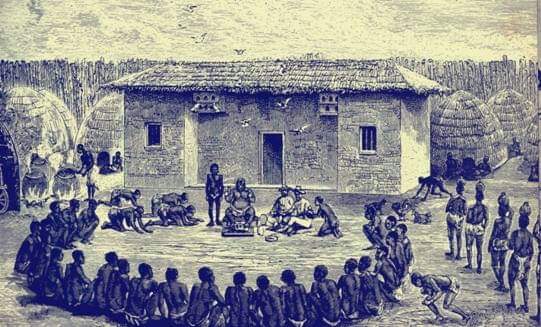By Thomas Sibanda
The first Bulawayo town was located at a site near present-day Douglasdale and Hope Fountain. It was later relocated to present-day High Mount, a suburb next to Sauerstown. A white builder, John Haylet, was contracted to build a stone wagon shed and brick house for King Lobhengula.
At that time of King Lobhengula’s reign, Europeans were already living in his territory. Some were missionaries, hunters, adventurers and prospectors. These Europeans represented different interests, whose ultimate goal was to colonise the Ndebele. At the time of the fall of the Ndebele state, King Lobhengula’s royal capital was expanding rapidly with over twenty-five white families having built modern residential homes within the radius of the royal palace and kraals. Lobhengula was a tall and well-built figure with a commanding presence.
Europeans generally considered him to be a pragmatic diplomat, witty, mentally sharp and authoritative. King Lobhengula had left an impression on European delegates when after completing the coronation purification rituals, he emerged from his royal quarters wearing an expensive and flamboyant new suit of European clothes, a bowler hat and shoes.
King Lobhengula’s white missionary friend, Thomas Morgan Thomas was of tremendous influence to his leadership style and world outlook. He helped him to modernise Bulawayo royal town. The biggest challenge King Lobhengula faced was the influx of white concession seekers. On the advice of Thomas, he granted a few of them mining rights in the nation’s borders and tributary lands like Tati which was granted to John Swinburne in 1870. The mining licenses were pegged at various fees in pounds sterlings. Thomas helped Bulawayo to develop a trading and licensing system with licensing fees charged in pounds. Only those with licenses obtained from the King had a right to open and operate stores in Bulawayo. Those who were among the first to get licenses included James Dawson, John Colenbrander, William Usher and James Fairbairn who operated stores in present-day Sauerstown Shopping Centre in Bulawayo.
There was also a camp for white people who wanted an audience with the king that was set up in the present-day surbub of Saursetown. Consultation fees were also charged in pound sterlings. Thomas had successfully persuaded the king to adopt the pound as the official currency of the Ndebele kingdom. Thomas who was not popular with the European community died in 1884 under mysterious circumstances. His death was a critical blow to King Lobhengula who still needed him for advice on developing his city and handling diplomatic relations with Europeans and the British crown.
At the time of his death, Thomas had been expelled by the UCCSA church because of his active involvement in Ndebele politics and diplomatic relations. His close relationship to the king was also a cause for concern. At the time of his death King Lobhengula had allowed him to open his own independent Christian missionary station in present day Bubi district known as Shiloh.
This is an extract from an upcoming book by Thomas Sibanda.

